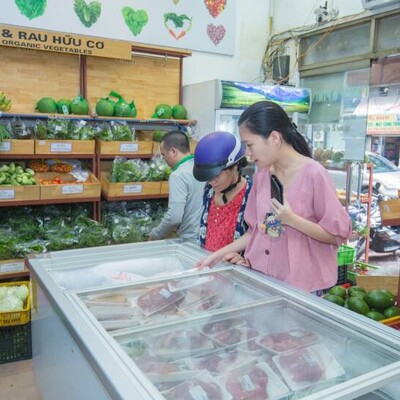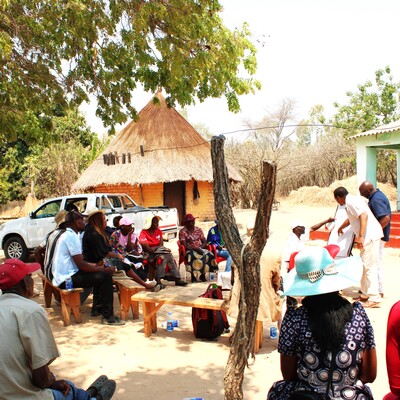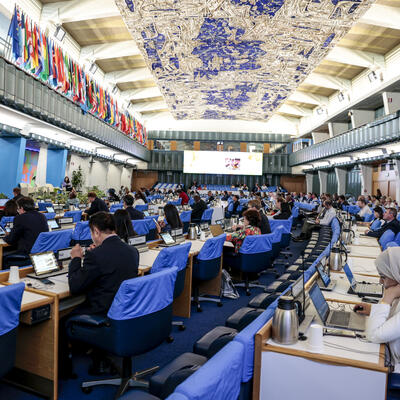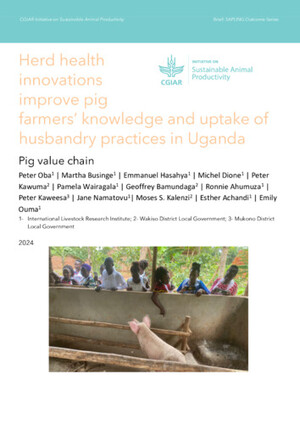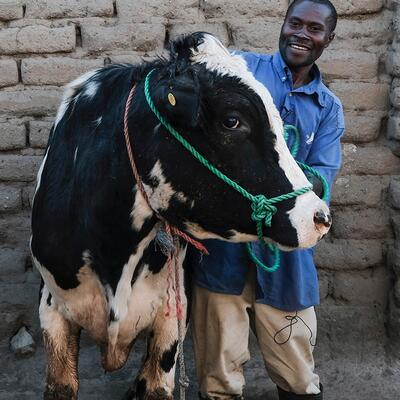
Pathways to prosperity—Developing-country livestock systems
In low- and middle-income countries, livestock represent much more than food and nutrition. Animals are a source of employment and income and a store of wealth. They are especially important to women, being one of the few assets in many societies that women are allowed to own and manage. They are an essential element of food production in mixed farming systems. And of course, they are a direct source of protein and vital micronutrients. Yet livestock’s place within sustainable development remains connected to concerns regarding industrial livestock.
For all these reasons, researchers from the International Livestock Research Institute (ILRI) and the International Centre for Agricultural Research in the Dry Areas (ICARDA) conclude in a recent paper in Animal Frontiers that support for livestock keepers and value-chain actors might be the best way for low- and middle-income countries to drive economic growth at the same time as meeting the demand for animal source foods.
Livestock and development
The contribution of livestock to gross domestic product (GDP) varies from about 25% in low- and middle-income countries to 50% in higher income countries.
'But', says Isabelle Baltenweck, an economist who leads the ILRI research program on Policies, Institutions and Livelihoods and is lead author of the paper, 'GDP calculations understate the full monetary contribution of livestock to the economies of low- and middle-income countries.'
For example, livestock are an essential input in mixed farms, a source of finance, manure and power for traction and transport. This type of farm supplies between 40% and 85% of the staple cereal crops, depending on the country. Without livestock, crop yields would be about half what they are and incomes would be lower, a threat to food security.
Livestock are also a 'walking savings bank' that livestock keepers can use to meet expenses. They may be used to purchase improve seeds and fertilizer and to pay for anticipated expenses, such as school fees or a wedding, and unplanned events such as medical expenses or a funeral. Livestock create downstream jobs too; in Kenya, the dairy sector employs about 15% of the labour force.
Women, especially, benefit from livestock and animal-source foods. As an asset, livestock can give women an independent source of income that they control. In their own families, affordable and accessible milk, meat and eggs foods contribute to better nutrition and health. These benefits, so important in the first thousand days of life, continue thereafter, leading to better attendance at school that in turn leads to higher lifetime wages.
'Local livestock production contributes to a healthy and productive population, resulting in almost immediate effects on economic development', notes Baltenweck.
At the same time, economic development in itself creates greater demand for animal-source foods, as is being seen in many emerging economies. So in some sense there is a virtuous circle for low-income countries. However, there are also the negative aspects of livestock systems that worry rich countries, including not only environmental damage and the harmful effects on health of overconsuming animal-source and other foods, but also the possibility of zoonoses—diseases that jump from livestock to people—emerging, which poorer populations may be more exposed to.
'Sustainable production of animal-source foods cannot be achieved without considering animals as part of a broader system', says Shirley Tarawali, ILRI assistant director general and chair of the Global Agenda for Sustainable Livestock.
Development and demand
All computer models project an increase in the demand for animal-source foods in coming decades in developing economies. In Asia, that demand is driven largely by increasing wealth, while in Africa it comes mainly from the growing population.
One model predicts that demand for animal-source foods will almost triple in Africa by 2050, and even if an economic downturn as a result of COVID-19 slows overall growth, demand will still rise considerably.
There are four, non-exclusive ways to meet the increased demand for milk, meat and eggs in developing and emerging economies.
#1 The most unrealistic, certainly for low- and middle-income countries, are the plant-based alternative proteins that 'alt-meat' campaigners in the Global North favour, which are likely to be unaffordable for the poor for a long time to come.
#2 Imports of animal-source foods may be cheaper for consumers than local alternatives, but they do little for local employment.
#3 Moving to a more industrial scale of livestock production could lead to cheaper animal-source foods but these systems could ignore environmental and animal welfare problems and might also harm family incomes, employment opportunities and women's empowerment.
#4 That leaves support for today’s small-to-medium-scale livestock keepers.
'That is complex and works both ways—livestock driving economic growth and economic growth driving demand for animal-source foods', says Baltenweck. The negative consequences of livestock systems must also be addressed. 'As a result, policymakers and investors in low- and middle-income countries face complex trade-offs', she adds.
Nevertheless, #4 is a winning approach.
'Better livestock feeds and genetics, better access to animal health services and development of livestock value chains would improve livestock producer incomes and enhance national economic growth', says Tarawali.
The authors of the paper conclude: 'Countries with an existing livestock sector should consider supporting small- and medium-scale farmers and value chain contributors to take advantage of the various opportunities offered by livestock to become more profitable and market oriented.'







